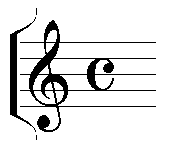-
Notifications
You must be signed in to change notification settings - Fork 223
SOUND module
This module contains functions to generate audible tones, attaching a piezo buzzer or a speaker to an output GPIO. The module can be used in two ways:
-
Raw notation, in which tones are described in terms of their frequency and duration.
-
Musical notation, in which tones are described in terms of the musical note, note duration, octave, time signature, etc ...
Tones are synthesized by the module using a tone generator:
| Generator | Id | Description |
|---|---|---|
| PWM | sound.PWM | The tone is synthesized by a PWM hardware module, which generates a square wave with a 50% duty cycle. |
| DAC | sound.DAC | The tone is synthesized by an I2S / DAC hardware module, which generates a sine wave at a 38 KHz sampling rate. |
Attach a tone generator to a piezo buzzer or a speaker.
Arguments:
- tone_generator: tone generator used to synthesize the tone.
- pin: GPIO where the piezo buzzer or the speaker is attached.
Returns: a sound instance, or an exception. You must store this instance into a variable for further operations with it.
Detach the tone generator and free all the resources used.
Arguments: none.
Returns: nothing, or an exception.
Play a musical note on the desired octave.
Arguments:
-
note: a formatted string (name [accidental] duration) describing the musical note to play and it's duration.
-
note name: the name of the note using the English naming convention.
English German Latin A A La B H Si C C Do D D Re E E Mi F F Fa G G Sol Notes in English naming convention, and their correspondence to other naming conventions.
-
accidental (optional): can be either # to raise the note by a semitone or b to lower the note by the same amount.
-
duration: note duration, relative to a semibreve of 1 time unit.
Duration Time units English USA Spanish Example 1 1 Semibreve Whole note Redonda 2 1/2 Minim Half note Blanca 4 1/4 Crotchet Quarter note Negra 8 1/8 Quaver Eighth note Corchea 16 1/16 Semiquaver Sixteenth note Semi-corchea 32 1/32 Demisemiquaver Thirty-second note Fusa 64 1/64 Hemidemisemiquaver Sixty-fourth note Semi-fusa The duration of the note can be increasing by the half of the note duration adding a dot (.).
-
-
octave: the octave in which the note must be played.
Returns: nothing, or an exception.
Set the time signature for the future notes to play.
Arguments:
-
upper: upper value of the signature, which specifies how many beats are contained in each bar.
-
lower: lower value of the signature, which specifies which note duration is equivalent to 1 beat.
-
bpm: beats per minute.
Tempo bpm Adagio 66–76 Adagietto 70–80 Andante 76–108 Andantino 80–108 Marcia moderato 83–85 Andante moderato 92–112 Moderato 108–120 Allegretto 112–120 Allegro moderato 116–120 Allegro 120–156 Some basic tempo markings an their correspondence to bpm.
Returns: nothing, or an exception.
Examples:
| Example | How to code |
|---|---|
 |
instance:timesignature(3,4,120) |
 |
instance:timesignature(4,4,120) |
 |
instance:timesignature(4,4,120) |
Play a silence of a specified duration.
Arguments:
-
duration: silence duration, relative to a semibreve of 1 time unit.
The duration of the silence can be increasing by the half of the note duration adding a dot (.).
Play a tone of a specified frequency an duration.
Arguments:
-
frequency: the frequency of the tone to play in hertz.
-
duration: the duration of the tone in milliseconds.
Returns: nothing, or an exception.
-- Play an audible tone at 440 Hz during 1 second
buzzer = sound.attach(sound.DAC, pio.GPIO26)
buzzer:playtone(440, 1000)In the following example it is shown how to translate the first 8 bars of the Harry Potter's music sheet.

buzzer = sound.attach(sound.DAC, pio.GPIO26)
buzzer:timesignature(3, 4, 240)
buzzer:playsilence("4")
buzzer:playsilence("4")
buzzer:playnote("B4", 4)
buzzer:playnote("E4.", 5)
buzzer:playnote("G8", 5)
buzzer:playnote("F#4", 5)
buzzer:playnote("E2", 5)
buzzer:playnote("B4", 5)
buzzer:playnote("A2.", 5)
buzzer:playnote("F#2.", 5)
buzzer:playnote("E4.", 5)
buzzer:playnote("G8", 5)
buzzer:playnote("F#4", 5)
buzzer:playnote("D2", 5)
buzzer:playnote("F4", 5)
buzzer:playnote("B2.", 4)







